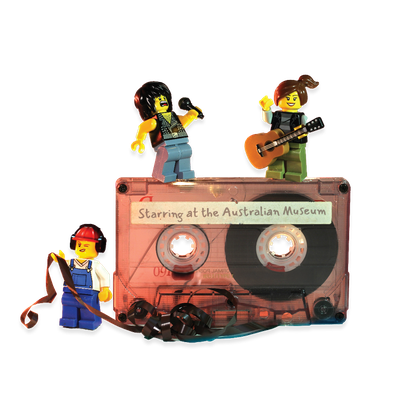Your search returned 2817 results
By Page Type
By Tag
- fish (966)
- blog (696)
- fishes of sydney harbour (401)
- First Nations (299)
- Blog (236)
- AMRI (169)
- archives (164)
- Eureka Prizes (146)
- Aboriginal and Torres Strait Islander (135)
- insect (126)
- Ichthyology (124)
- geoscience (109)
- minerals (102)
- climate change (99)
- podcast (94)
- Fish (91)
- Anthropology (89)
- International collections (80)
- Minerals Gallery (78)
- wildlife of sydney (78)
- Labridae (77)
- frog (74)
- gemstone (70)
- photography (66)
- history (64)
- Mollusca (60)
- gem (59)
- staff (59)
- Birds (56)
- Gems (56)
- Indonesia (56)
- education (56)
- shark (55)
- AMplify (54)
- people (53)
- earth sciences (50)
- exhibition (50)
- past exhibitions (50)
- Gobiidae (48)
- sustainability (46)
- Pomacentridae (45)
- Serranidae (44)
- lifelong learning (42)
- science (42)
- Earth and Environmental Science (41)
- Syngnathidae (41)
- Ancient Egypt (40)
- Bali (40)
- bird (40)
- dangerous australians (40)
-
Smithsonite on Cerussite
https://australian.museum/learn/minerals/mineral-factsheets/smithsonite-on-cerussite/Smithsonite is usually white or cream, yellow or blue, but occasionally a trace of copper can give it a pleasing apple green colour, like this one.
-
Malachite in Gossan
https://australian.museum/learn/minerals/mineral-factsheets/malachite-in-gossan/This is a very large and impressive malachite (copper hydroxy-carbonate) with rounded groups of green, radiating fibrous crystals of velvety texture, that was extracted from an open cavity in the mine.
-
Pyrosmalite-(Mn)
https://australian.museum/learn/minerals/mineral-factsheets/pyrosmalite/Pyrosmalite-(Mn) is a very rare mineral, even rarer in large crystals.
-
Mundrabilla iron meteorite
https://australian.museum/learn/minerals/mineral-factsheets/mundrabilla-iron-meteorite/Iron meteorites such as Mundrabilla are thought to have been originally part of the metallic core of an asteroid, broken up through collisions in the Asteroid Belt.
-
Corundum (sapphire) with diamonds in a platinum ring
https://australian.museum/learn/minerals/mineral-factsheets/corundum-diamonds-platinum-ring/Sapphire (aluminium oxide) can be many colours, but the beautiful blue we see most often is from traces of iron and titanium.
-
Rhodochrosite
https://australian.museum/learn/minerals/mineral-factsheets/rhodochrosite/The rich, raspberry colour of this rhodochrosite (manganese carbonate) dazzles with its large transparent and sharp ‘dog-tooth’ crystals up to 4 cm in size.
-
Calcite with fluorite
https://australian.museum/learn/minerals/mineral-factsheets/calcite-with-fluorite/Both calcite (calcium carbonate) and fluorite (calcium fluoride) are common species worldwide, but it is the shape, colour, size and combination that make this specimen very special.
-
Bournonite with quartz
https://australian.museum/learn/minerals/mineral-factsheets/bournonite-with-quartz/With its large, silvery ‘cog-wheel’ crystals, this is one of the finest bournonites in the world.
-
Pyrite
https://australian.museum/learn/minerals/mineral-factsheets/Pyrite/This fine specimen has large striated cubic crystals of pyrite (iron sulphide).
-
Linarite
https://australian.museum/learn/minerals/mineral-factsheets/linarite/This is one of the best linarite specimens in existence. Its chemical composition is lead, copper hydroxy- sulphate.
-
Discover more
2025 Australian Geographic Nature Photographer of the Year
Special exhibition
Free entry
Now open -
Discover more
Unfinished Business
Special exhibition
Free entry
Now open -
Discover more
Wansolmoana
Permanent exhibition
Free entry
Open daily -
Find out more
Burra
Permanent kids learning space
Free entry
10am - 4.30pm![]()
-
Discover more
Minerals
Permanent exhibition
Free entry
Open daily![]()




